| Name | McIntyre Lacrimal Probe Cannula |
| Lead Time | Lead time advised within 48 hours of order placement. |
| Competitor | ;OP0903001;OP0903-001;E43953;E4395-3;601208;60-1208;E-4395-3;6012-08;OP0903002;OP0903-002;601209;60-1209;6012-09;6012-08_6012-09; |
| Specialty | Ophthalmology-Cannulas |
| Material Finish | Stainless Steel |
| Grade | Premium Operating Room |
| Units of Measurement | Each |
| Manufacturer | Lexis Industry |
| Sterility | Non-Sterile |
| Usage | Reusable |
McIntyre Lacrimal Probe Cannula
2″ (5.0 cm), 23-gauge McIntyre Lacrimal Probe Cannula is an extremely useful tool in treating tear duct obstructions. The probe may be used to investigate blockage of lacrimal gland damage or more frequently, obstruction of the nasolacrimal duct. The slender profile of the cannula allows access to the small entrances of the duct. Both straight and curved models are available depending on surgical preference.
SKU:
BF-9939
Category: Cannulas
Description
Reviews (0)
Be the first to review “McIntyre Lacrimal Probe Cannula” Cancel reply
Shipping & Delivery
Related products
Nucleus Hydrodissection Cannula
25 gauge, 7.0 mm angled shaft w/ flattened tip, overall length 21.0 mm (excluding hub)Nucleus Hydrodissection Cannula is a useful tool in cataract extraction procedures. The cannula can be used to manipulate and rotate the lens during a hydrodissection for easier extraction. The small gauge with flattened tip assures minimal trauma to the surrounding tissue.
Lieppman Cystotome
w/ guard, 22-gauge, 2" (5.0 cm)Lieppman Cystotome is a commonly used tool during cataract phacoemulsification procedures. The cystotome may be used to create a circular incision in the anterior capsule before proceeding with aspiration of the lens. The tool features a guard to prevent extraneous damage to the surrounding iris or globe tissue.
Lacrimal Cannula – Reinforced Shaft
1.2" (3.1 cm) shaft w/ 2.0 cm reinforced, 23-gauge Lacrimal Cannula is an extremely useful tool in treating tear duct obstructions. The cannula may be used to investigate blockage of lacrimal gland damage or more frequently, obstruction of the nasolacrimal duct. The cannula features a reinforced shaft to prevent bending and kinking during the procedure.
Jensen Capsule Polisher
tip flattened, 19-gauge Jensen Capsule Polisher is a useful tool in cataract procedures. The polisher is used to remove opacity on the posterior capsule leading to improved surgical outcome. The diamond dusted tip is delicate enough to prevent rupture of the capsule. Two sizes are available with the polisher depending on surgical preference.
Gimbel Irrigating Cannula
30 gauge u-tip, overall length 28.0 mm (excluding hub)Gimbel Irrigating Cannula is a useful tool during cataract and IOL implantation procedures. The cannula may be used to perfuse fluid for easier manipulation of the IOL or easier access to debride nuclear fragments. The ultra-small gauge facilitates entrance into the lens capsule.
Lacrimal Cannula
1.2" (3.1 cm) shaft w/ 2.0 cm reinforced, 23-gauge Lacrimal Cannula is an extremely useful tool in treating tear duct obstructions. The cannula may be used to investigate blockage of lacrimal gland damage or more frequently, obstruction of the nasolacrimal duct. The slender profile of the cannula allows access to the small entrances of the duct. Two different working lengths are available with the cannula depending on surgical preference.
Kratz Capsule Scraper
shaft w/ sharp top, shaft angled 60 degrees, 12.0 mm tip from angle to tip, 22-gauge, 1/2" Kratz Capusle Scraper is a useful tool in phacoemulsification procedures. The sandblasted tip is designed to scrape the surface of the posterior capsule to remove and cellular debris following aspiration of the nucleus.
Bailey Lacrimal Cannula
reinforced shaft, 23-gauge, 1/2" (1.5 cm) Bailey Cannula is an extremely useful tool in treating tear duct obstructions. The cannula may be used to investigate blockage of lacrimal gland damage or more frequently, obstruction of the nasolacrimal duct. The cannula features a reinforced shaft to prevent bending and kinking during the procedure, while the shorter working length affords the surgeon more control.


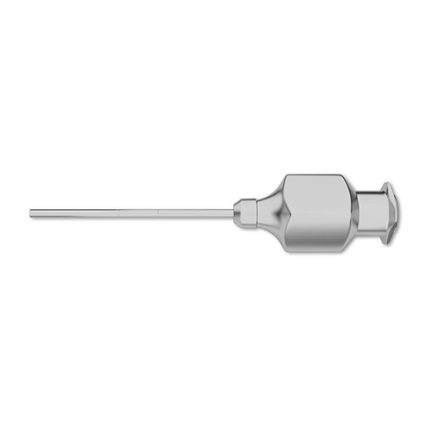

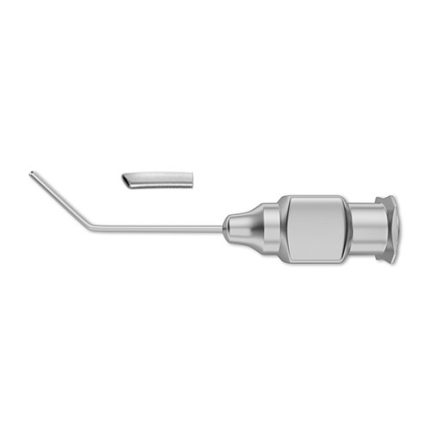



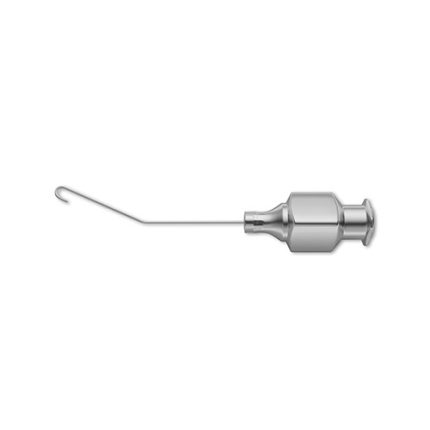
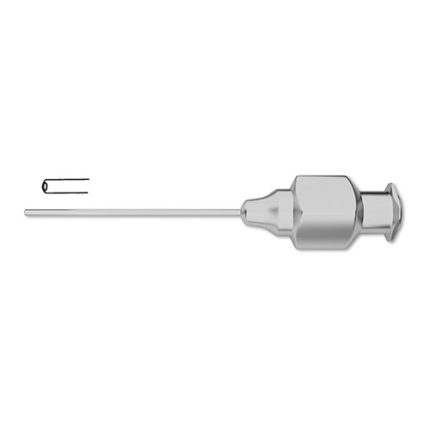
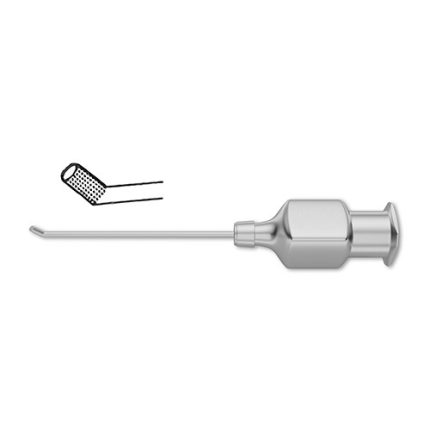

Reviews
There are no reviews yet.